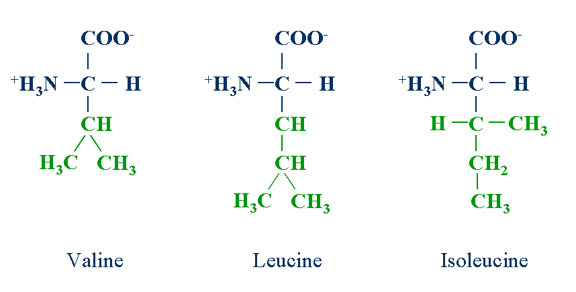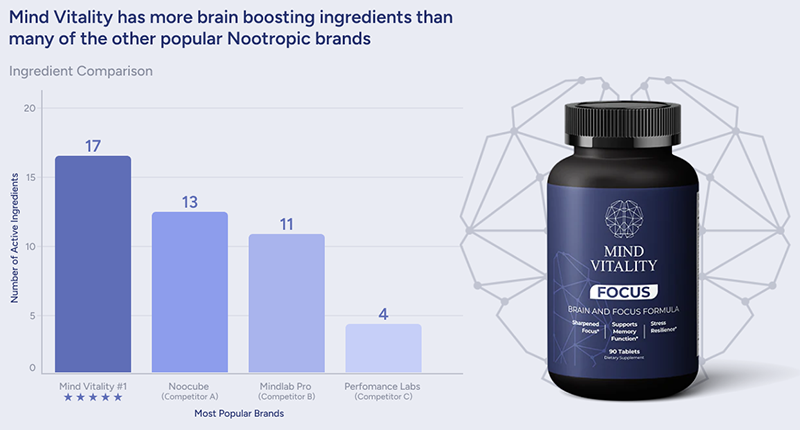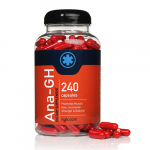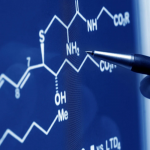Amino acids elevate workout performance, speed up recovery, and help to build muscle. Amino acids are a type of antioxidants, and antioxidants are vital in the fight against aging. So in addition to what amino acids are best known for — increasing muscle mass and strength — they also play a significant role in anti-aging.
Contents
What Are Amino Acids
Amino acids are the building blocks of protein. Proteins are the building blocks of every cell. Cells are the building blocks of every tissue and organ. Amino acids act as the catalyst for every chemical process in the human body.
Amino acids are often associated only with protein production and muscle gain, but they’re also play a crucial role in just about every other physiological function, including metabolism, regulation of hormones, production of enzymes, and cognitive ability.
There are 20 amino acids, all of which are important. Nine of the amino acids are labeled essential because the body cannot manufacture them and it’s essential that a person consume them in their diet. The other 11 amino acids are labeled nonessential — not because they are unimportant, but because the body can manufacture them.
The nine essential amino acids are: histidine, isoleucine, leucine, lysine, methionine, phenylalanine, threonine, tryptophan and valine. The 11 nonessential amino acids are: alanine, arginine, asparagine, aspartic acid, cysteine, glutamic acid, glutamine, glycine, proline, serine, and tyrosine. More information on the basics of amino acids can be found in this article.
Essential Amino Acids (EEAs)
The nine amino acids that can’t be produced by the body are referred to as essential amino acids, or EEAs. The body acquires these amino acids through a person’s diet, especially from high-protein foods such as eggs, fish, meat and amino acid supplements.
Each of the EEAs play several roles in protein development and maintaining healthy body functions. The following is a brief summary of the most key aspects of these nine amino acids.
- Histidine is a precursor to histamine — histidine is necessary for the metabolic actions that create histamine. Histomine helps limit the cell-damaging free radicals that get produced during exercise, and is also involved in immune responses.
- Threonine helps in the metabolism of fat. Like histidine, threonine is involved in immune functions.
- Phenylalanine stimulates the release of adrenaline from the adrenal glands, which is important to the functioning of the nervous system. Phenylalanine is needed for the synthesis of dopamine, so it has an antidepressant effect.
- Lysine is an amino acid common in many supplements of interest to bodybuilders. This is because lysine is important to human growth hormone (HGH) secretion, and HGH supports muscle recovery and repair. Additionally lysine is a crucial component of elastin and collagen, structural proteins essential for building strong connective tissue.
- Methionine promotes cardiovascular health, assists the body in processing and eliminating fat, and helps eliminate toxins by supporting liver function.
- Tryptophan is a precursor for the neurotransmitter serotonin, which regulates mood, appetite and sleep. Tryptophan is of interest to workout enthusiasts because it increases pain tolerance during intense workouts.
- Leucine acts in a unique way in that it aids in burning fat without burning muscle, making it a very popular supplement for workout enthusiasts. Studies show that leucine encourages the production of human growth hormone (HGH).
- Isoleucine helps in preventing muscles from breaking down during exercise, leading to faster post-workout recovery. Isoleucine is also important for energy regulation and immune function.
- Valine supplies muscles with extra glucose, thereby providing extra energy during workouts. Valine also stimulates muscle regeneration.The last three amino acids in the above list of EEAs — leucine, isoleucine, and valine — are also referred to as branch chain amino acids, and they’re particularly important when it comes to muscle building.

Branched Chain Amino Acids (BCAAs)
As listed above, there are nine essential amino acids. Of these nine, three — leucine, isoleucine and valine — are referred to as branched-chain amino acids, or BCAAs. Branched-chain is referring to the fact that the chemical structure of each of these three amino acids includes a “side chain” of one carbon atom and three hydrogen atoms.
The chemical structure of BCAAs may be significant to chemists, but to the average person the importance lies in the metabolic difference that results from this structure.
Catabolism is the breakdown of complex molecules to form simpler ones, along with the release of energy. With most amino acids, the initial step of BCAA catabolism takes place in the liver. BCAAs are unique among amino acids in that they aren’t broken down in the liver, but instead directly enter the bloodstream and are absorbed into skeletal muscle. This means that shortly after intake these amino acids are in circulation and are available to tissues. This fast-acting property gives BCAAs an advantage over other amino acids, making branched-chain amino acid supplements very popular with exercise-conscious consumers.
Benefits of BCAAs
BCAAs are beneficial to workout enthusiasts in a few ways:
- Increases Muscle Growth The BCAA leucine owes its popularity with bodybuilders because it alone acts as a stimulatory signal for muscle protein synthesis — the process of making muscle. The most popular use of BCAAs in general, and leucine in particular, is to increase muscle growth.
- Decreases Muscle Soreness
Anyone who has ever had a serious workout session knows all too well that it’s very common to feel sore a day, or even two days, after the workout. This type of soreness is referred to as delayed onset muscle soreness, or DOMS. BCAAs are known to decrease muscle damage, which can help in reducing the length and severity of DOMS. - Reduces Exercise Fatigue BCAAs can also help in reducing exercise-induced fatigue. During exercise muscles use BCAAs which causes a decrease in the levels of BCAAs in the blood. A sharp decrease in blood levels of BCAAs trigger an increase in the tryptophan levels in the brain. The amino acid tryptophan is quickly converted to serotonin — a brain chemical that contributes to fatigue during exercise. By supplementing with BCAAs shortly before a workout the body is guaranteed to have sufficient BCAAs in the bloodstream during the workout, thereby avoiding the tryptophan/serotonin increase that brings on workout fatigue.
Studies show that BCAAs stimulate the biochemical pathway that signals muscles to grow, and they also help to prevent muscles from being broken down. Additionally, when combined with weight training BCAAs increase testosterone and decrease stress hormones. Leucine plays the biggest part in this process and is appropriately considered the most important of these three amino acids — but they are all important.
In addition to being useful for increasing muscle mass, BCAAs are important in the fight against aging. Antioxidants are defenders against free radicals, the main cause of cell damage and aging. All amino acids — and particularly BCAAs — act as antioxidants.
A recent study in the medical journal Cell Metabolism showed that branched chain amino acids contribute to an increase life span by stimulating mitochondrial biogenesis — the generation of new mitochondria. Mitochondria are tiny cellular structures that take in nutrients, breaks them down, and create energy-rich molecules for the cell — mitochondria are said to be the “power generators” of cells. Healthy, fully-functioning mitochondria keep cells healthy and extend their life.
Creatine
Creatine is a substance found naturally in muscle cells. Creatine contributes to muscle production of energy during high-intensity exercising, such as weight lifting. Creatine itself isn’t an amino acid, though it has many similarities with amino acids and is produced by the body from the amino acids glycine and arginine.
ATP Supplies Energy to Cells
Adenosine triphosphate, or ATP, is the most basic form of energy in a body’s cells. ATP plays a significant role in metabolism and muscle function. The body isn’t designed to store large amounts of ATP — storage is limited and the body tries to create more on-demand, or “on-the-fly,” as needed. This system usually works well, as the body seldom needs large amounts of ATP on very short notice. Unfortunately, in those infrequent times when there is a quick demand for high levels of ATP, the body comes up short.
The limited store of ATP is depleted in as little as ten seconds of high-intensity exercise, then the body works to quickly generate more. This may be best illustrated in athletes who are sprinters — even the best athletes can only sprint at full speed for several seconds, at which point the ATP supply is depleted.
The primary way in which the ATP supply is regenerated is through the molecule phosphocreatine. Creatine increases the body’s store of phosphocreatine, which is then used to produce more ATP during high-intensity exercise.
How Creatine Helps Build Muscle Mass
Creatine’s ability to increase the body’s phosphocreatine, and in turn produce ATP, is hugely important for anyone engaged in high-energy exercise. Bodybuilders know this, and it’s the reason why creatine is the number-one supplement for improving performance in the gym. There aren’t many legal supplements that have the ability to directly add muscle mass when paired with exercise. Of these few supplements, creatine is by far the most effective and has the most scientific support.
Like muscles, the brain stores phosphocreatine. And like muscles, the brain requires plenty of ATP for peak function. So in addition to being crucial to athletic performance, creatine offers other health benefits — neurological benefits that contribute to anti-aging. The increase in brain phosphocreatine stores, and thus ATP stores, that creatine brings about can improve memory and brain function and prevent neurological diseases including Alzheimer’s, Parkinson’s disease and Huntington’s diseases].
Conclusion
Loss of strength and muscle mass is a common during the aging process — most people lose up to 2% of their muscle mass every year past the age of 50 (study). Many people consider gaining muscle mass as simply an aesthetic endeavor, but keeping and increasing muscle mass is actually a part of the fight on aging — low muscle mass contributes to a higher risk of falls, injury and a general decline in quality of life.
Amino acids play a huge role increasing muscle mass. Being powerful antioxidants means amino acids play other roles in anti-aging, such as fighting free radicals that cause cell damage (and in turn tissue and organ damage).






